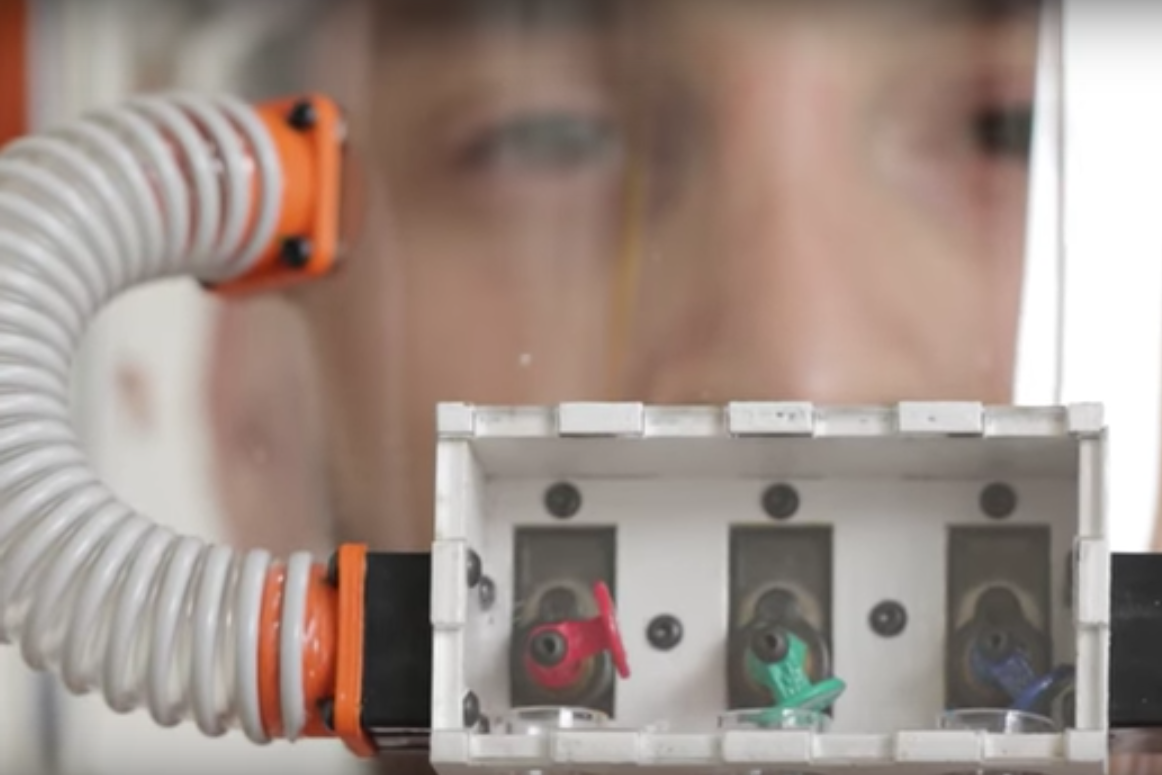Howard’s mask actually starts with a color sensor at his fingertip. The sensor registers the color of whatever Howard touches, and sends that data to an Intel Edison Chip. The chip analyzes the detected color in order to break it down into the three components that computers use to understand any color: red, green, and blue. Then the chip processes the RGB color composition to the three scent reservoirs containing essential oils in the mask. Two small fans blow over the reservoirs to carry the right amount of each scent to Howard’s nose.
Since each scent was programmed to correspond to either red, blue, or green, the percentage of each hue used in the precise color Howard was touching queued a proportional release of each essential oil. In Howard’s own version of the mask, grapefruit represented red, tea tree was green, and lavender was blue. So touching grey objects would release an unpleasant mixture of every scent, but touching something blue, for example, would give Howard a comforting burst of lavender. That’s not to say that you can’t use any scent combination you like, thanks to step-by-step instructions to build your Synesthesia Mask that Howard has shared through Instructables.
Although many cases of synesthesia are still a mystery to scientists, the predominant understanding is that regions of the brain that control the different senses are communicating with each other in synesthetes in a way they don’t in the average human. When the part of the brain that controls the sense of sight is crossed with the part of the brain that controls smell, for example, the result could very likely be synesthesia. Howard’s synesthesia mask isn’t likely to help scientists study the condition, but it could help ordinary people better understand the lives of their synesthete family members and friends.









